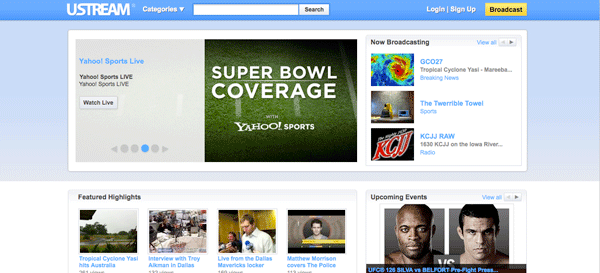Producing Conference Video Pt. 4: Live Delivery and Postproduction
What happens when you deliver your event live? This is nothing new for live TV broadcasters, but more and more event video producers are being asked to perform their postproduction activities in real-time—that is, live as the event is occurring.
Now this wasn't just replacing a single item like a video camera, burnt-out light bulb, or forgotten audio cable. I was an hour out and the IT contractor hired to take care of the video streaming just arrived on location and between us we had only a single laptop along with access to hotel provided Ethernet cable and extension cords. My first thought was to find a Newtek TriCaster because it would replace several specialized components and we simply did not have the time to purchase or rent from several providers (not that there were many within a reasonable distance anyways), let alone get them to play nicely with each other.
That turned out to be the right call as only five minutes from the webcast hotel lived a local webcast producer. She had a basement studio and recently had taken out an ad on Craigslist for a part-time webcast operator for her Tricaster system. We raced over to her basement studio and quickly negotiated the rental of her Tricaster, video camera, tripod, wireless lavaliere, and a couple of video cables. The setup and testing were a breeze compared to the usual multi-component setup and cabling that I had become accustomed to, even without consulting the manual, and before the presenter even arrived, we had completed our tests and were ready to stream live video. This simply would not have been possible without an all-in-one system like the Newtek TriCaster.
Serving up Streaming Video
The final step in getting your video streaming live online is to send the signal to a streaming server using an internet connection. One of the keys is to ensure you have sufficient upload capabilities in your internet connection. Most ISPs spend their marketing efforts praising their services' download speed as downloading is what most users spend the majority of their time online doing, but a webcaster has to pay attention to the upload speed-my current package is only 1Mbps up compared to 15Mbps down and on a connection like this I would only stream at 512Mbps in order to account for normal fluctuations and to minimize the occurrence of dropouts or stalling.
Now while it is possible to purchase, license, and operate your own streaming server, new or smaller webcasters will probably want to subscribe to a monthly package or pay-per-use model from a live streaming platform like Livestream, Justin.TV, or Ustream. Regardless, most services will use one of the following streaming servers: Adobe Flash Media Streaming Server, Apple QuickTime Streaming Server, RealNetworks Helix Streaming Server, Wowza Streaming Server, or Microsoft Windows Media Streaming Server. These services take your video feed and distribute them to the viewers who are watching your video live over the internet. Most webcasters will embed the live video stream in a custom webpage but streaming platforms automatically provide a branded YouTube-like webpage that the live stream can be viewed from.
One final note on live streaming. Just be aware that there is a slight delay in live streaming so if you plan on connecting two of more sites simultaneously so that they can interact, be aware that they may not be able to have a completely fluid back-and-forth conversation.

One live streaming platform option: Ustream
Well, this concludes my four-part series on Producing Conference Video. I hope you have enjoyed reading the articles as much as enjoyed writing them for you. I'll leave you with one last thought: Take this info and run with it, even if you are going to apply it to a different niche market. What's important is that you use it to help you grow your current business in the markets that you service and expand into additional niche markets that have strong growth potential and are a great fit for you and your company. Happy streaming!
Related Articles
Whether you're shooting a conference, a convention, or an AGM, the setup of the shoot is one of the most important parts of the production process. It's the step where you select the equipment, establish your camera positions, lay your cables, and check and recheck your audio and lighting.
Award-winning producer Shawn Lam looks at two key elements of the process: capturing multimedia presentations effectively for both live-switched productions and post-produced edits, and how to become a successful technical director of a live-switched shoot, whether for IMAG delivery or providing a live feed for broadcast or webcast.
Award-winning producer Shawn Lam looks at the art and science of stage lighting and the challenges of making lighting designed for performance work for video. He also discusses the meat-and-potatoes things you need to know for microphone selection and successful live-recorded conference audio.